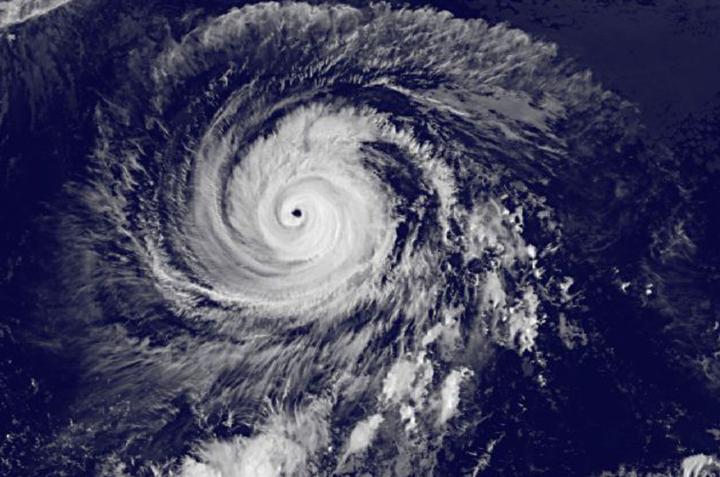NASA sees wind shear affecting Hurricane Ignacio

This infrared image from NOAA's GOES-West satellite shows Hurricane Ignacio's clouds bring blown to the northeast from wind shear on Sept. 1 at 8:00 a.m. EDT. Credits: NASA/NOAA GOES Project
The Atmospheric Infrared Sounder or AIRS instrument that flies aboard NASA's Aqua satellite gathers infrared data that reveals temperatures. When NASA's Aqua satellite passed over Ignacio on September 1 at 11:41 UTC (7:41 a.m. EDT), the AIRS data and showed some high, cold, strong thunderstorms surrounded the center where cloud top temperatures were near -63F/-53C.
However, AIRS also showed that southwesterly wind shear was pushing the thunderstorms to the northeast of the low-level center.
The National Hurricane Center noted that infrared data showed the central dense overcast clouds had now been completely sheared away and replaced with a “warmer banding feature across the western and northern semicircles.” That means weaker thunderstorms with less cold cloud top temperatures, because there wasn't as much uplift in the atmosphere to push them higher.
On September 1 at 8:00 a.m. EDT an infrared image from NOAA's GOES-West satellite clearly showed that that southwesterly vertical wind shear was affecting the storm. In the image it appeared that Ignacio developed a tail that extended to the northeast as its clouds and thunderstorms were being pushed in that direction.
At 11 a.m. EDT (1500 UTC/5 a.m. HST), the center of Hurricane Ignacio was near latitude 23.5 north and longitude 153.7 west. That's about 310 miles (495 km) east-northeast of Honolulu, Hawaii, and 275 miles (445 km) north-northeast of Hilo. The estimated minimum central pressure is 984 millibars.
Ignacio's maximum sustained winds dropped to near 80 mph (130 kph). That means that Kilo is a category one hurricane on the Saffir-Simpson Hurricane wind scale. The Central Pacific Hurricane Center expects Ignacio to slowly weaken through early Thursday, September 3.
NOAA's Central Pacific Hurricane Center noted that large swells generated by Ignacio will continue along east and northeast facing shores of the Hawaiian Islands over the next couple of days. Resultant surf will be large…potentially damaging and life-threatening.
Media Contact
All latest news from the category: Earth Sciences
Earth Sciences (also referred to as Geosciences), which deals with basic issues surrounding our planet, plays a vital role in the area of energy and raw materials supply.
Earth Sciences comprises subjects such as geology, geography, geological informatics, paleontology, mineralogy, petrography, crystallography, geophysics, geodesy, glaciology, cartography, photogrammetry, meteorology and seismology, early-warning systems, earthquake research and polar research.
Newest articles

Combatting disruptive ‘noise’ in quantum communication
In a significant milestone for quantum communication technology, an experiment has demonstrated how networks can be leveraged to combat disruptive ‘noise’ in quantum communications. The international effort led by researchers…

Stretchable quantum dot display
Intrinsically stretchable quantum dot-based light-emitting diodes achieved record-breaking performance. A team of South Korean scientists led by Professor KIM Dae-Hyeong of the Center for Nanoparticle Research within the Institute for…

Internet can achieve quantum speed with light saved as sound
Researchers at the University of Copenhagen’s Niels Bohr Institute have developed a new way to create quantum memory: A small drum can store data sent with light in its sonic…




















